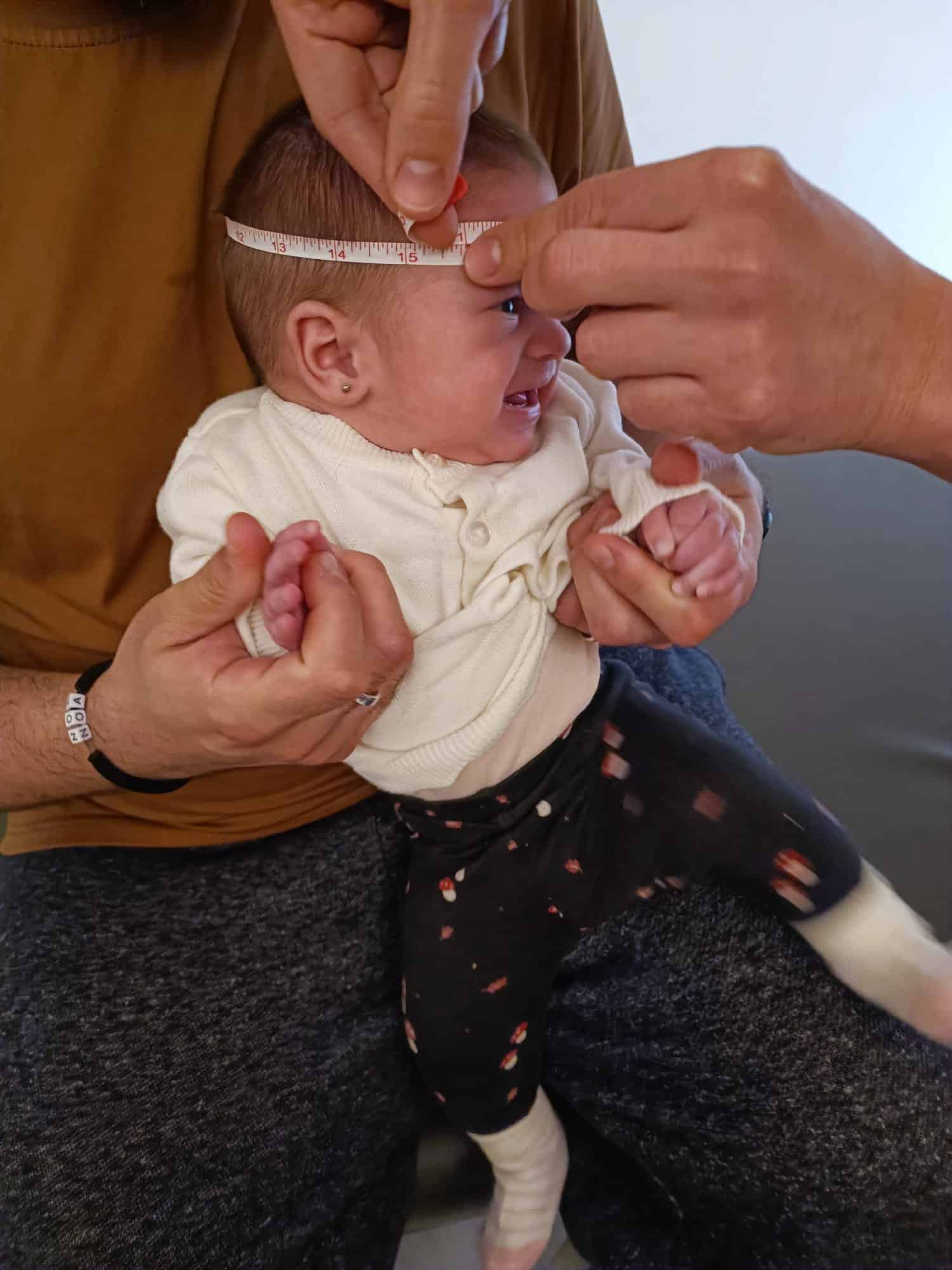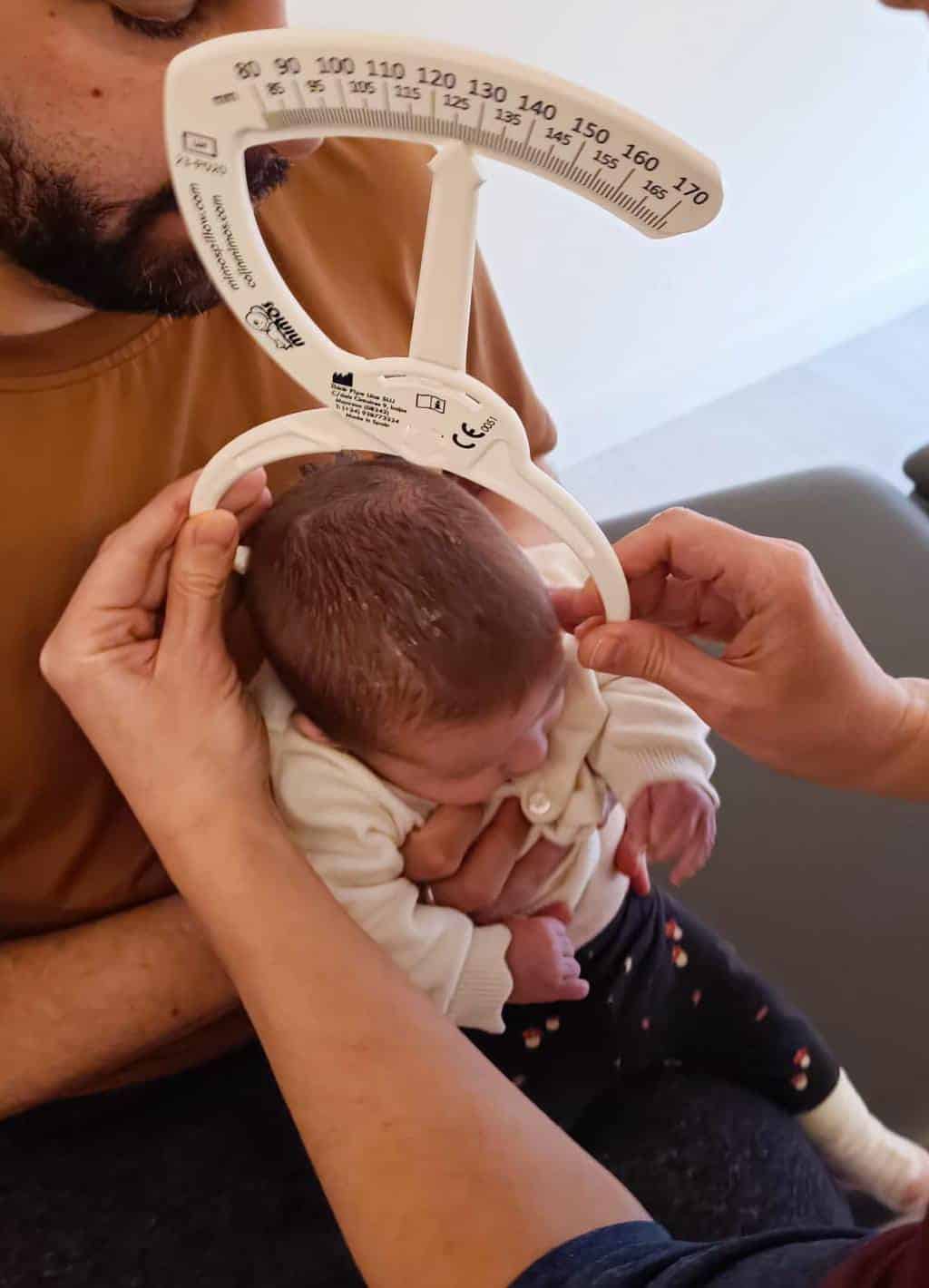What is plagiocephaly?
Plagiocephaly is a condition that affects the shape of the skull in infants, resulting in a deformation or flattening in one part of the head.
This craniofacial architectural asymmetry is commonly seen in infants. It is the second most common reason for consultation in newborns between 0-27 days of age, the most common in infants from 28 days to one year of age and remains so until 23 months of life.
It has an incidence of up to 50% in 1 month old infants and increases to almost 57% at 3 months depending on the source requested.
It is important to note that it can vary in severity, from mild cases that correct themselves to more severe cases that require medical intervention. Parents should watch for signs of plagiocephaly, such as an asymmetrical head, misaligned ears or displaced jaw, and seek medical guidance if they have any concerns about the shape of their baby’s skull.
Depending on the area or the shape of the deformity, we can call them plagiocephalies, brachiocephalies, dolphocephalies,…
The criteria for severity in an infant are:
- Posterior flattening
- Asymmetry of ear position
- Frontal asymmetry
- Cervical compensation
- Facial asymmetry.



Identifying plagiocephaly in infants
Identifying it in infants is essential to address it in time and seek appropriate medical attention.
Some signs that may indicate plagiocephaly include an asymmetrical or flattened head on one side, ears that appear to be at different heights, misaligned eyes, and a jaw that shifts to one side.
In addition, parents may notice that the infant prefers to turn the head to a specific side or has difficulty turning the head in both directions. It is important to watch for these signs and communicate any concerns to your baby’s pediatrician.
An early diagnosis may allow the implementation of more effective preventive or corrective measures. If suspected, the pediatrician may perform a physical examination and, in some cases, recommend imaging tests, such as x-rays or ultrasound scans, to assess the severity of the condition and determine the best course of action.
Does mild plagiocephaly correct itself?
In many cases of mild plagiocephaly, correction may occur naturally over time.
Simple measures, such as changing the position in which the baby sleeps and increasing tummy time, can help redistribute pressure on the skull and promote more uniform growth. It is important to keep in mind that consistency in the implementation of these measures is key to seeing results.
However, if the plagiocephaly shows no signs of improvement or if it worsens, it is critical to seek medical guidance to explore additional treatment options.
Correction options for plagiocephaly
There are several correction options for plagiocephaly, ranging from non-invasive measures to more advanced interventions, depending on the severity of the condition and the recommendation of the healthcare professional. Some of these options include:
- Osteopathy Plagiocephaly: Osteopathy is a manual therapy that focuses on promoting balance and mobility in the baby’s body. Osteopaths can work to correct muscle and bone imbalances.
- Helmet for plagiocephaly: In more severe cases, the use of an orthopedic helmet may be recommended by the physician. This device is used to redirect skull growth into a more natural shape, providing controlled pressure in specific areas to stimulate growth in others.
- Cushions and pillows: There are cushions and pillows specifically designed to prevent and correct plagiocephaly in infants. These products provide adequate support for the baby’s head during sleep and rest time, helping to distribute pressure more evenly.
It is important to consult with a healthcare professional to determine the best treatment option for each individual case of plagiocephaly.
Prevention of plagiocephaly
Preventing plagiocephaly in infants is possible with the implementation of simple measures from birth. Some effective strategies include:
- Alternate baby’s position during sleep: Placing the baby on his or her back to sleep is important to reduce the risk of sudden infant death syndrome (SIDS), but alternating the position of the baby’s head can help prevent it.
- Encourage tummy time: Tummy time while awake and under supervision is crucial for strengthening neck and back muscles, as well as preventing plagiocephaly.
- Limit time in restricted devices: Avoiding spending too much time in car seats, swings or other devices that restrict movement can help prevent constant pressure on the skull.
- Regular checkups with the pediatrician: Regular checkups with the pediatrician allow you to monitor your baby’s skull development and address any concerns early.
Implementing these measures early on can help reduce risk.
Conclusion
In conclusion, plagiocephaly is a common concern among parents of infants, but with proper knowledge and timely care, it is possible to address and correct this condition.
From identifying the signs of plagiocephaly to implementing prevention measures and exploring treatment options, parents can play an active role in the health and well-being of their babies. It is always important to consult with a health care professional for specific guidance on the best course of action for the baby.
With the right support, parents can take proactive steps to ensure that their babies grow up with a healthy skull shape and optimal quality of life.
You can request a consultation with BwellClinic where we will help you and study the case in detail to find the best course of action. Or contactus.
